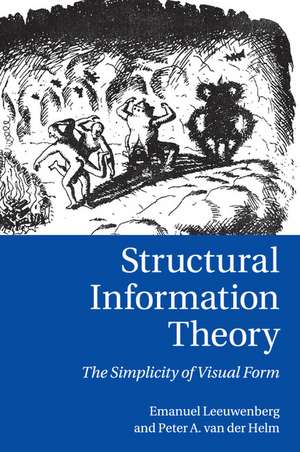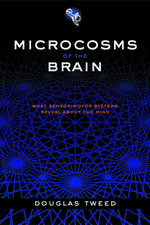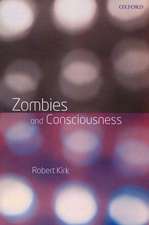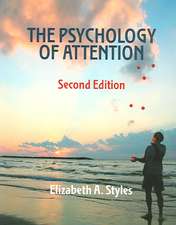Structural Information Theory: The Simplicity of Visual Form
Autor Emanuel Leeuwenberg, Peter A. van der Helmen Limba Engleză Paperback – iul 2015
| Toate formatele și edițiile | Preț | Express |
|---|---|---|
| Paperback (1) | 294.14 lei 6-8 săpt. | |
| Cambridge University Press – iul 2015 | 294.14 lei 6-8 săpt. | |
| Hardback (1) | 728.37 lei 6-8 săpt. | |
| Cambridge University Press – 21 noi 2012 | 728.37 lei 6-8 săpt. |
Preț: 294.14 lei
Nou
Puncte Express: 441
Preț estimativ în valută:
56.28€ • 58.65$ • 46.60£
56.28€ • 58.65$ • 46.60£
Carte tipărită la comandă
Livrare economică 03-17 aprilie
Preluare comenzi: 021 569.72.76
Specificații
ISBN-13: 9781107531758
ISBN-10: 1107531756
Pagini: 340
Ilustrații: 137 b/w illus. 4 colour illus. 2 tables
Dimensiuni: 230 x 150 x 20 mm
Greutate: 0.45 kg
Editura: Cambridge University Press
Colecția Cambridge University Press
Locul publicării:New York, United States
ISBN-10: 1107531756
Pagini: 340
Ilustrații: 137 b/w illus. 4 colour illus. 2 tables
Dimensiuni: 230 x 150 x 20 mm
Greutate: 0.45 kg
Editura: Cambridge University Press
Colecția Cambridge University Press
Locul publicării:New York, United States
Cuprins
Introduction; Part I. Towards a Theory of Visual Form: 1. Borders of perception; 2. Attributes of visual form; 3. Process versus representation; 4. Models and principles; 5. Assumptions and foundations; Part II. Applications to Visual Form: 6. Formal coding model; 7. A perceptual coding manual; 8. Preference effects; 9. Time effects; 10. Hierarchy effects; Part III. Extensions: 11. Perception beyond SIT; 12. SIT beyond perception; Overview; Conclusion.
Recenzii
'Whether you are familiar with structural information theory or not, you will enjoy this systematic presentation by Emanuel Leeuwenberg, its original proponent, and Peter van der Helm, its main formal developer. Through twelve chapters, including a coding manual, they distil order out of perception and cognition, like the demons invoked in the introduction. SIT provides a powerful language for evaluating how strongly the mind strives for simplicity; the book provides an optimal context for evaluating the strength of SIT.' Walter Gerbino, University of Trieste
'Leeuwenberg and van der Helm have assembled the definitive statement on their influential theory of the coding of visual forms. SIT is the most thorough system available for capturing the essence of a structure's simplicity, so this volume will be required reading for those interested in this far-reaching and quintessentially Gestalt concept.' James Pomerantz, Rice University
'[This] book is a well-written, well-structured overview of SIT at the endpoint of its development. The underlying (meta)theoretical principles and assumptions are spelled out clearly. The empirical support is reviewed in just enough detail to understand all the necessary details. The systematic and coherent presentation of this material makes it relatively easy to digest. The different sections and chapters contain useful previews and interim summaries. The book has a large number of richly detailed coding examples as well as many visual examples, with Leeuwenberg's personal touch (in addition to having a keen eye as a visual phenomenologist, he is also very talented in drawing and painting).' Johan Wagemans, Perception
'Leeuwenberg and van der Helm have assembled the definitive statement on their influential theory of the coding of visual forms. SIT is the most thorough system available for capturing the essence of a structure's simplicity, so this volume will be required reading for those interested in this far-reaching and quintessentially Gestalt concept.' James Pomerantz, Rice University
'[This] book is a well-written, well-structured overview of SIT at the endpoint of its development. The underlying (meta)theoretical principles and assumptions are spelled out clearly. The empirical support is reviewed in just enough detail to understand all the necessary details. The systematic and coherent presentation of this material makes it relatively easy to digest. The different sections and chapters contain useful previews and interim summaries. The book has a large number of richly detailed coding examples as well as many visual examples, with Leeuwenberg's personal touch (in addition to having a keen eye as a visual phenomenologist, he is also very talented in drawing and painting).' Johan Wagemans, Perception
Notă biografică
Descriere
A coherent and comprehensive theory of visual pattern classification with quantitative models, verifiable predictions and extensive empirical evidence.















